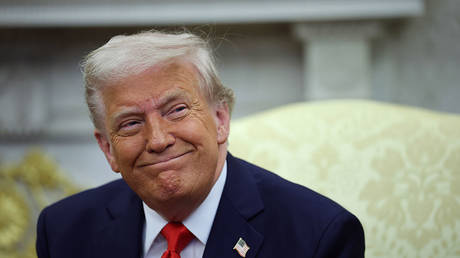What does SVB’s collapse mean for other banks? Here’s what else might go wrong — and what to expect next.
Our finance and economics reporters teamed up with a banking regulation expert to answer reader questions on Reddit.


The sweeping results of Biden’s actions last weekend prevented multimillion-dollar losses for thousands of companies that relied on Silicon Valley Bank. But the fallout from the largest bank failure since the 2008 financial crisis is still reverberating.
As regulators race to find a buyer willing to take on the bank’s domestic lending portfolio, some major companies are left scrambling to secure new lines of credit. Lobbyists are drawing battle lines as progressives in Congress push for tighter regulations. And Washington is still racing to calm investor fears of instability at other financial institutions.
Our finance and economics reporters teamed up with a banking regulation expert to answer your most pressing questions on Reddit. These answers have been lightly edited for brevity.
Is it necessary that regional banks continue to exist? Why or why not?
This is a fantastic question. The U.S. has nearly 5,000 banks (and another 5,000 or so credit unions). That's a lot of competition. Part of what's strange though is a lot of that is a vestige of when we used to have restrictions on banking across state lines. So consolidation is perhaps understandable.
You don't want too much concentration in the megabanks (think JPMorgan Chase or Bank of America, which each have more than $3 trillion in assets, compared to SVB, which had roughly $200 billion). And regional banks like SVB are probably better able to compete with those banks than the little guys. But there's certainly room to debate whether we don't need as many banks as we have now.
— Victoria Guida, POLITICO economics reporter covering the Federal Reserve, the Treasury Department and the broader economy
What regulations are being discussed, and what is the probability that any of these regulations will see the light of day? At this point, what is the likelihood that the SVB collapse is a contagion?
At this stage it's extremely unlikely lawmakers would agree on a bill that would lead to any substantial changes — like Warren and Porter's rollback of the Dodd-Frank rollback — that would make it across the finish line. Not enough Dems support it and it's a divided Congress.
On the other hand, there are definitely signs that bank regulators are looking at things like capital requirements and better supervision. On the latter, one of the issues that's been raised is that regulators didn't spot the problems with SVB's investment portfolio/depositor concentration. Fed Vice Chair Michael Barr is overseeing a review of that as we speak.
— Sam Sutton, POLITICO financial services reporter covering fintech and digital currencies
Do you think the decision to protect depositors, but not investors, is indicative of a new policy direction, or is this just a one-off due to the nature of SVB's customer composition (an overwhelming number of large-ish employers)?
The legal answer to this is that there’s not a new policy. What actually happened is that the Fed, FDIC and Treasury invoked a "systemic risk exception" to the requirement that the FDIC try to minimize losses to its deposit insurance fund. That requires there to be some sort of threat to the financial system or the broader economy. (As an aside, the agencies haven't really laid out their full justification for that, but the central reason seems to have been staving off financial panic.)
It might be hard to keep suggesting that every bank poses that kind of risk! And of course, that's not what Congress has said — the deposit insurance limit is set at $250,000. That said, this could spur a change in deposit insurance law sometime in the future.
But the answer is actually more complicated than that. The Fed also unveiled an emergency lending program that, for the time being, will allow banks to put up the type of collateral that SVB dumped for cash loans that will help them meet withdrawal requests. So for now, the government has basically facilitated banks being able to handle more panicky behavior by depositors (although it depends on whether they have enough of the right type of assets). And that's sort of an indirect backing of depositors for now!
— Victoria
Why was $1.8 billion in bond losses enough to make the bank insolvent? Where had all the deposits from clients gone that they couldn't handle the bank run?
It had less to do with the losses than it did the depositors' reaction to those losses. Remember this bank was pretty concentrated: Venture's a big deal but it's also a little bit of a small world. So when word got out that SVB was taking steps to repair its investment portfolio, depositors — startup founders, VCs, etc. — fled en masse. $42 billion gone in a day, which likely would've been more if CA regulators and FDIC didn't step in. Hard to survive that kind of run.
— Sam
Are we expecting a chain reaction of more banks collapsing due to the global nature of panic these days?
The Fed has intervened to insulate open banks against liquidity concerns related to the open banks. Preventing a contagion likely played a role in invoking these systemic risk authorities for banks that are otherwise not central to the financial system. Crisis-fighters largely lost their authorities after the 2008 financial crisis to protect individual banks from contagion without first closing them. So, responding forcefully to these relatively insignificant banks' failures hopefully limits contagion to any banks that may actually be more prone to spreading financial wildfire.
The other thing worth noting is that this has primarily been a run on one kind of business model — banking tech/VC/Silicon Valley — which itself is facing belt-tightening as the Fed has raised interest rates steeply. We have not seen signs of contagion to large, diversified banks, which are actually experiencing deposit inflows.
— Steven Kelly, Senior Research Associate at the Program on Financial Stability at Yale University
How do you think this alters the FOMC’s plans for tightening? Do you think they have moved too fast? What else might break that they didn’t anticipate?
It will definitely be a major factor in how the Fed is thinking about what to do next on interest rates. Inflation is still high — 6 percent over the past year — but it's steadily dropped since the middle of last year. That said, it's shown signs the last couple of months of mostly moving sideways rather than moving convincingly down.
All of that to say, this is a tricky place for the Fed. What we saw with the banks was an example of how rate moves can suddenly hit, with a delay, in unpredictable ways. And so they have to be worried about going too fast and breaking something else. But they might still do a small increase later this month because they're still worried about inflation. It's about risk management at this point.
— Victoria
Does this mark the beginning of the end for bank deregulation legislation that is framed as “right sized or tailored regulation”?
Unlikely. Tailoring as a broad and general concept is something that seems pretty logical: A community bank with less than $1 billion in assets that mostly does just basic lending shouldn't face the same type of regulations as a megabank with $3 trillion in assets. How exactly that all shakes out is very complicated (and, as you implicitly suggest, offers a lot of room for mischief). But certainly, this has likely made both lawmakers and regulators much less sympathetic to arguments from banks — say, between $100 billion and $250 billion in size — that they don't pose risks to the economy.
— Victoria
Was it really all that "shocking"? Seemed pretty expected something would happen with all the interest rate hikes, no?
Indeed, financial distress was definitely an expected outcome of the Fed's interest rate hikes. They very explicitly wanted to tighten financial conditions — and banks are a huge part of the financial sector. The Fed is (awkwardly?) also in charge of bank supervision — i.e. making sure banks are resilient. And it has a financial stability mandate. It seems the Fed wants tighter financial conditions, but only outside the core banking system.
— Steven
What are SVB's assets? Does the depositor’s refund come from bank reserves or the FDIC?
SVB's assets are largely longer-term Treasuries and government-backed mortgage securities. These securities have little risk of loss if they're held to maturity, but they lost paper value as interest rates increased. So when SVB lost deposits and had to sell assets, they had to bear those losses.
While depositors have immediate access to their funds — which may need to be funded in the short-term by the FDIC — the FDIC will only lose money if its sale of the assets (and/or liabilities) of SVB is less than enough to cover all the depositors. And, if the FDIC's insurance fund dips below what it determines to be sufficient coverage for the system, it will levy the banking system for the shortcoming.
— Steven
What is the reason that Pacwest Bancorp has been hit hard during this? Their financials seem to suggest little doubts about liquidity.
Liquidity and capital regulations are helpful against general downside banking risks. They can do little if the market bails on your business model. PacWest's business looks very similar to SVB's even if their balance sheet looks stronger. Being a bank to tech/Silicon Valley doesn't look like a viable business model in this interest rate environment - hence the counterparty run. When your counterparties run as a bank, you're out of business. No amount of capital or liquidity can save you.
— Steven












